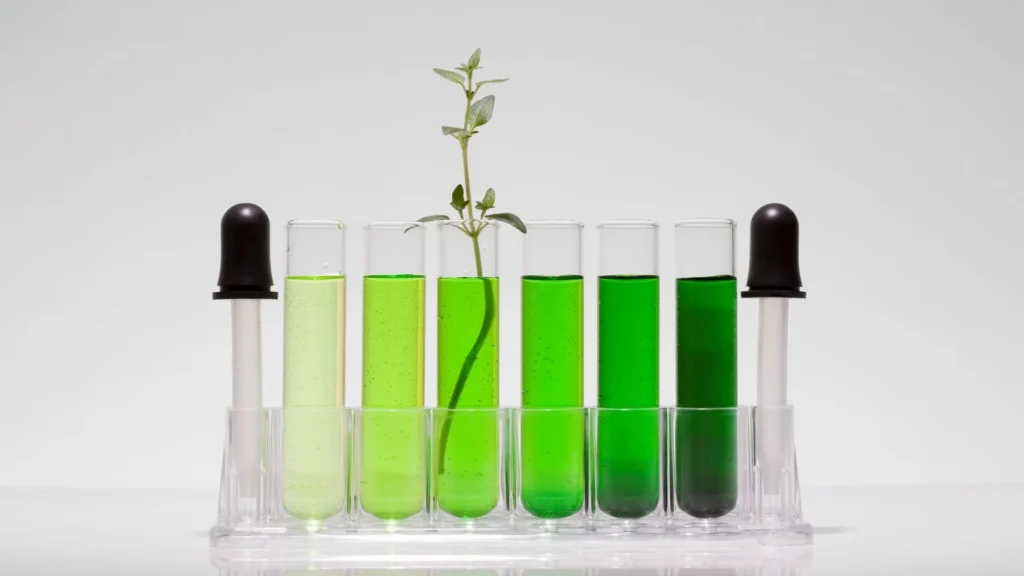We opened the recent VelocityEHS ESG Virtual Conference with an expert discussion on green chemistry, a strategy that many EHS professionals are still looking for clarity and guidance on. In the session of Green Chemistry and How It Fits into ESG, three of our own VelocityEHS subject matter experts joined forces to share insights and next steps on developing your organization’s ESG program.
Read through this blog post to get the highlights of the discussion, and then watch the session for yourself!
Session Speakers – Resident ESG Experts
Moderated by Rachel Ripley, Product Manager of Chemical Management, this panel included VelocityEHS resident experts, Lyn Ip, Sr. Solutions Strategist of ESG & Green Chemistry; Julian Moffatt, Solutions Executive of ESG & Environmental Compliance; Marc Juaire, Solutions Executive of Safety & Operational Risk. With decades of combined experience, these experts easily broke down the concept of green chemistry and how it applies to ESG before answering questions submitted live by the audience!
What is green chemistry?
Green chemistry is an aspect of chemical management and ESG that analyzes the way an organization uses chemicals and substances, in terms of safety and sustainability, as well as which chemicals and substances are used. It’s important to verify that all products and processes are safe for employees to work with, safe for the end consumer, and safe for the longevity of our planet.
Our resident ESG experts specifically define green chemistry as, “the design of chemical products and processes that reduce or eliminate the use or generation of hazardous substances. Green chemistry applies across the life cycle of a chemical product, including its design, manufacture, use, and ultimate disposal.”
How does green chemistry fit into ESG?
Environmental, Social and Governance (ESG) encompasses a wide variety of issues that affect our planet and people, such as an organization’s impact on the natural world, how the organization treats people inside and outside of its own walls (e.g., how it operates as an employer, and as a member of communities and supply chains), and how well a company is managed and abides by ethical practices at all levels.
Over the last 50 years, many countries have implemented regulations and restrictions on various substances, and as ESG continues to gain momentum, the number and scope of global regulations and/or restrictions of substances will continue increasing as well.
After a quick presentation on what green chemistry really means, most of the session was devoted to audience member Q & As, of which there were many!
Here are just a few of the questions and excerpts from the answers. Check out the entire session on demand to get the full, in-depth insights from our experts.
Session Q + A
What should an organization do to start adopting green chemistry into their operations?
Lyn: It’s important to start with a materiality assessment, and to also ensure you have a true understanding of every single chemical used in your organization – no matter what type, the amount used or way it’s used.
Julian: Think of the maturity curve – the first aspect you need to get a handle on is compliance. The goal is to go well beyond compliance and reach the predictive stage of the maturity curve, but like anything in EHS & ESG, it’s difficult to get to an advanced level if you’re failing compliance.
Who should own their organization’s green chemistry strategy?
Julian: That’s going to vary depending on the organization – it could fall under a Chief Sustainability Officer or Chief Procurement Officer, EHS managers, resident chemists, or somewhere in the supply chain, depending on how your organization is set up.
Who are the external stakeholders in a company’s green chemistry strategy?
Marc: There are a number of key stakeholders to consider outside of the organization as you develop a green chemistry strategy – your customers, your suppliers, your employees and the communities in which you operate.
Is adopting green chemistry into an organization expensive? Whart are some points that help build the business case for investing in green chemistry?
Lyn: Costs will vary, depending on the size of your organization, the nature of your organization, what it is that you manufacture or services you provide. It’s hard to put a numeric value to it that meets everyone’s needs and wants. One thing that everybody should be working toward is not to have regrettable substitutions. While another chemical might be cheaper, be sure that you’ve done the due diligence behind it to determine if it’s actually going to create more harm than what you have now.
This panel discussion on Green Chemistry and How It Fits into ESG is an excellent starting place for those just beginning or refining their green chemistry practices. Tune in to the recording to see the full conversation.
Then, start your product stewardship journey by taking control of the chemical ingredients in your profile and reducing the impacts and harm your product may have on the environment and people – with VelocityEHS Green Chemistry Software.
